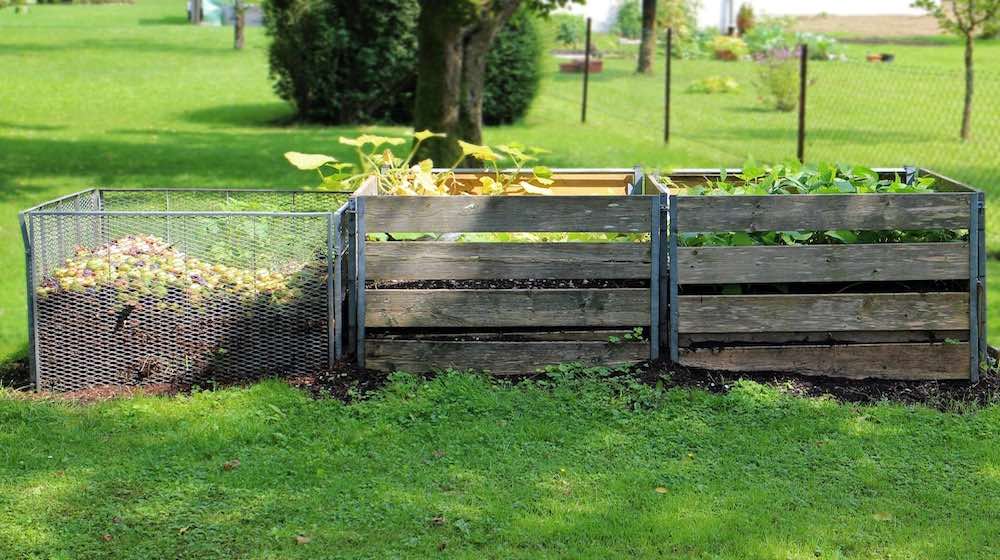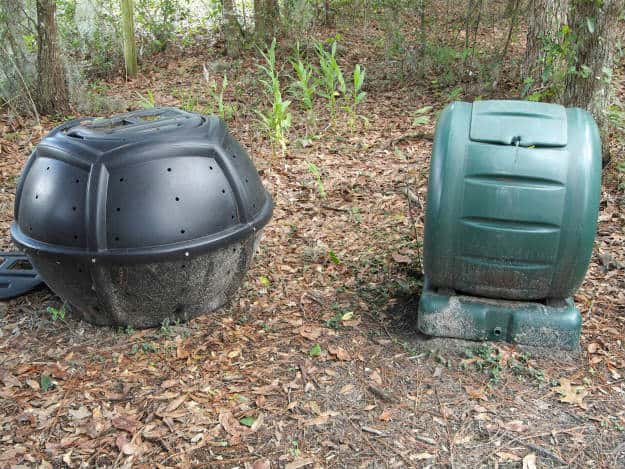Featured Articles
Composting For Beginners | The Building Blocks To A Better Harvest

If you are brand new to gardening, then you may be wondering what composting is and why it’s so beneficial to your garden. Before I tell you, let me just say this. The truth is, gardens can do well without ever being introduced to composting BUT, your garden can flourish so much by being introduced to the wonderful world of composting! It’s an all natural solution that produces the healthiest outcome for your flowers, veggies, AND your family!
So, what exactly is composting?

Composting, by definition, is a mixture of organic and decaying materials such as plant leaves, manure, food scraps, etc used to fertilize the soil within your garden. This means chemical fertilizers and pre-packaged plant food (that also contain chemicals) can be replaced completely with compost. Which saves you money along the way…that’s a huge plus for me! Another plus to composting is you are allowing nature to recycle and that is so important.
Sounds great, right? I think so! Let’s talk about the basic and initial steps on how to get you started with composting!
Composting For Beginners – Where To Start

Let’s talk about the natural materials you can compost. There are so many materials you can compost but, today I’ll cover the most common. Let’s begin!
The most common materials you can use for composting:
These materials are rich in nitrogen:
- Fruit and vegetable scraps
- Used coffee grounds and filters (recycled coffee filters are recommended)
- Used tea bags
- Fresh leaves and plants
- Grass clippings
- Horse manure
These materials are rich in carbon:
- Bread and grains
- Nut shells
- Eggshells
- Dead leaves
- Hay and straw
- Small twigs
- Sawdust
- Dryer lint
- Dried flowers
- Newspaper clippings (usually shredded)
What NOT to compost:
- Non-compostable products such as tin cans
- Large branches
- Coal or charcoal ashes
- Colored and glossy paper
- Sand
- Pet feces or cat litter
- Dead animals
- Meat/Fish scraps
- Dairy products (eggshells are the exception)
- Fats, oils, and grease
- Weeds with seeds
- Diseased plants
What to do next
The next step would be to have a place to store all of the compost materials. At this point, you need composting bins. It is very important to note that the compost materials rich in nitrogen need to be stored in a separate compost bin than your compost materials rich in carbon. For example, you don’t want to store your dead (dried) leaves with moist food scraps or your newspaper clippings with wet tea bags or used coffee grounds, etc. They will all eventually come together in a composting system such as a composting tumbler which we’ll cover here in a moment.
There are a couple of choices for storage. You can use a traditional outside garbage can with a lid and 3 gallon (or any size you prefer) buckets will work as well. Just know that the bigger the ‘bucket’ container is (when full) will be harder to carry when you transfer it to the actual composting system. I recommend storage with a lid because it helps eliminate odors created from materials such as food scraps and horse manure, for example. Plastic storage containers are the most common (and are the cheapest).
Once the storage containers or bins are full, the next step is to transfer it to the composting system that makes the actual compost. The final product will be your replacement for your store bought fertilizer and/or store bought plant food.
The Next Step – Your Composting System
This is the most important step!
The most common system for completing the composting process is called a tumbler composter. What this system does is it combines ALL of your collected and stored composting materials and with the ‘tumbler’ effect, it turns the materials into the final composting material – the final product! It will take about 2-3 weeks for this final process but, again, well worth it!

Purchasing one can be a little pricey but it is a one time purchase and is so worth it. I took to Amazon once more to bring you, the beginner gardener, the best price possible!
This particular system is great for beginners and has awesome reviews from beginner and seasoned gardeners alike. It is called the Yimbly Tumbler Composter.
Its features include: (source)
- Two-chambered tumbling composter
- Recycled plastic bin with steel frame
- Adjustable air vents
- Makes compost in as little as 2 weeks
- 37-gallon capacity
Follow the complete instructions when you receive this tumbler system and you are good to go! This is how you and your family can have the healthiest garden….NO CHEMICALS!
There you have it…composting for beginners! In my opinion, growing nature WITH nature is the only way to go! Happy gardening!
For more great ways to save money as a beginner gardener, check out my recent article, 12 Budget Friendly Must-Haves For Every Beginner Gardener.

Do you have a composting tip you would like to share with us? Please share with us in the comment section below.
Stay tuned for my next article, “Gardening Hacks For Beginners”!
Check out my previous article, Easy To Grow Vegetables For Beginner Gardeners | Useful Survival Skills!
If you’re looking for useful survival gear that you can’t make at home, check out the Survival Life Store!
-

 Do It Yourself7 months ago
Do It Yourself7 months agoParacord Projects | 36 Cool Paracord Ideas For Your Paracord Survival Projects
-

 Do It Yourself9 months ago
Do It Yourself9 months agoHow To Make Paracord Survival Bracelets | DIY Survival Prepping
-

 Do It Yourself9 months ago
Do It Yourself9 months ago21 Home Remedies For Toothache Pain Relief
-

 Do It Yourself10 months ago
Do It Yourself10 months agoSurvival DIY: How To Melt Aluminum Cans For Casting
-

 Exports8 months ago
Exports8 months agoAre Switchblades Legal? Knife Laws By State


Pingback: 7 Knots That Every Eagle Scout Knows And So Should You
Pingback: Survival Catapults | Applications and Designs Through The Ages
Pingback: Top 10 Natural Remedies for Chicken and Duck Keeping | Outdoor Enthusiast Lifestyle Magazine
Pingback: Summer Gardening Tips For Your Survival Garden
Pingback: Top 10 Natural Remedies for Chicken and Duck Keeping
Pingback: Survival Gardening - How To Grow Lettuce Indoors
Pingback: Growing The Perfect Peppers: Survival Gardening
Pingback: Triple A’s of Nature’s Medicine: Antiviral ~ Antibacterial ~ Antibiotic - Survive!
Pingback: 6 Surprising Uses for Old Tires | Survival Life
Pingback: 6 Surprising Uses For Old Tires - Survive!
Pingback: 6 Surprising Uses For Old Tires
Pingback: 6 Surprising and Creative Uses For Old Tires | survivalisthandbook.com
Pingback: A USGI Sea Bag: The Ideal Vehicle Go Bag For You
Pingback: A USGI Sea Bag: The Ideal Vehicle Go Bag For You - Survive!
Pingback: For Preppers, Papercrete Is The New Concrete | Survival Life
Pingback: For Preppers, Papercrete Is The New Concrete | Primitive technology
Pingback: For Preppers, Papercrete Is The New Concrete – Ultimate Survival Alerts
Pingback: For Preppers, Papercrete Is The New Concrete – CNH Survival